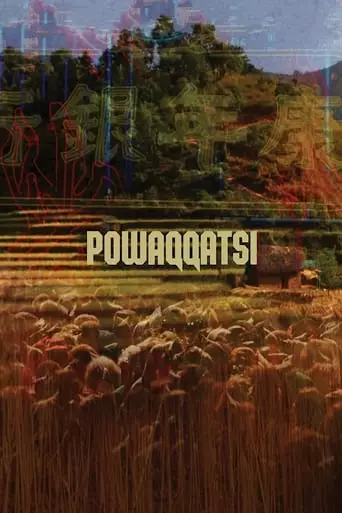
Powaqqatsi (1988) Watch Online Free
An exploration of technologically developing nations and the effect the transition to Western-style modernization has had on them.
Powaqqatsi (1988), directed by Godfrey Reggio, is the second installment in the Qatsi Trilogy, following Koyaanisqatsi (1982). The film is a visually arresting meditation on the impacts of modernization and industrialization, highlighting the contrasting ways of life between rural and urban societies around the world. Its exploration of social inequality, environmental degradation, and cultural displacement is paired with a powerful minimalist score by Philip Glass, which enhances the movie’s thought-provoking imagery.
The film opens with stunning, slow-motion shots of people carrying heavy loads in rural settings, their movements juxtaposed against the encroaching industrialization represented by the modern world. Powaqqatsi translates to “life in transformation,” which accurately describes its portrayal of how traditional ways of living are being overtaken by a rapidly industrializing world.
The narrative structure of Powaqqatsi is non-linear and fragmented, making it more of an experience than a traditional story. It follows a global journey, from the bustling cities of Brazil to the tranquil villages of Africa and the remote landscapes of Nepal. Each location represents the intricate labor of people who still rely on traditional methods of survival and are impacted by the forces of progress. Unlike typical documentaries, the film focuses on visual rhythms and extended sequences, often presenting moments in slow motion or through time-lapse photography, which creates a hypnotic, almost dreamlike quality.
The cinematography, by Leonidas Zourdoumis and Graham Berry, captures the profound beauty of everyday life, while the score by Philip Glass adds to the emotional resonance. Glass’s music complements the stark visuals, often enhancing the emotional weight of scenes that explore the human cost of modernization.
One of the film’s most striking aspects is its focus on human labor. From the slow-motion shots of women carrying bundles of goods to the grueling physical labor depicted in urban centers, the film conveys both the beauty and tragedy of manual labor. However, this labor is set against the backdrop of a changing world, where traditional ways of life are increasingly being replaced by mechanized processes and consumerism.
The film also offers a critical reflection on the environmental consequences of industrial progress. As the camera moves from rural to urban areas, it starkly contrasts the organic rhythms of nature and the manufactured pace of the city, pointing to the negative consequences of overconsumption and exploitation.
Another prominent theme is the resilience of the human spirit. Despite the hardships faced by the individuals depicted in the film, there is a sense of hope, as many of the subjects are shown in moments of profound dignity, even in the face of overwhelming odds. The aforementioned scene of a child walking along a highway, seemingly unaware of the truck speeding past him, is a powerful metaphor for the resilience of people living in impoverished conditions.
After watching Powaqqatsi, expect to feel a deep sense of contemplation. The film’s thought-provoking visuals and slow pacing compel you to reflect on the environmental and social impacts of modernity. You may feel a sense of melancholy as the film portrays the struggles of impoverished communities caught in the grip of industrial progress. However, there is also a sense of awe at the resilience of the human spirit and the beauty found in everyday life, despite the overwhelming challenges faced by many. Ultimately, Powaqqatsi is a call for reflection on the costs of the modern world, and its haunting imagery will stay with you long after the credits roll
